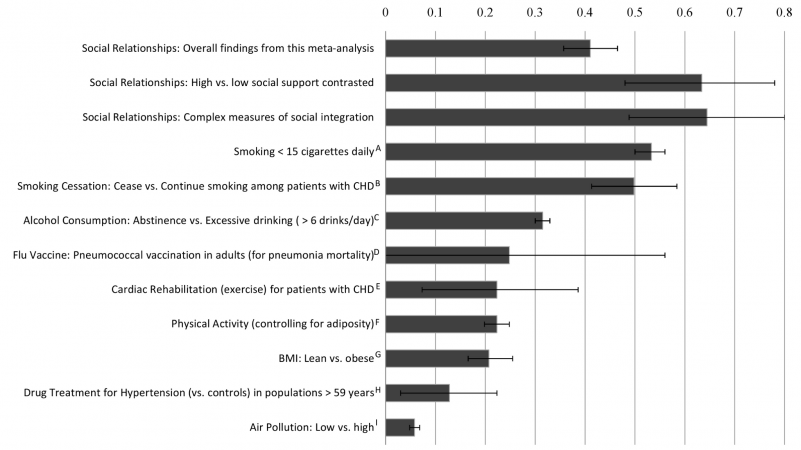Compassionate communities
There is real importance placed on trying to keep people in the community and trying to avoid unnecessary hospital admissions, especially for people who are palliative. Unfortunately, there are now increasing pressures in acute settings, so people end up waiting for long periods of time before being seen. Palliative illness usually leads to fatigue and reduced mobility which causes reduced social contact, isolation and a loss of purpose and wellbeing. Developing strong relationships and using local community resources can benefit patients and their families. Compassionate communities recognise that caring for people at times of loss and crisis is not just a task for health and social services but involves everyone.
Evidence shows that social contact and interconnectedness is the single most important factor in keeping the population happy and healthy (especially with face-to-face interactions). The graph below illustrates that this, in terms of an intervention, is more important that physical activity, smoking cessation and alcohol consumption in terms of keeping people healthy. The idea of compassionate communities is to build community resource, but link in with already established networks. The idea is to increase awareness of local resources around one’s own surgery and navigate people towards them.

Within the hierarchy of primary care, specialist care and civic actions, compassionate community actions have their own place. The diagram below depicts the specific positive and negative consequences of its existence and use.

